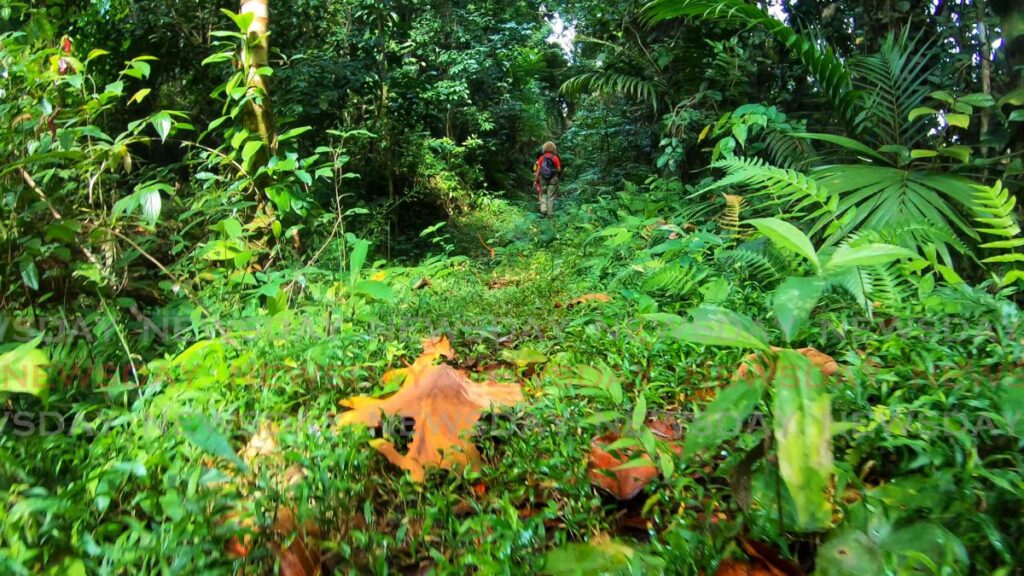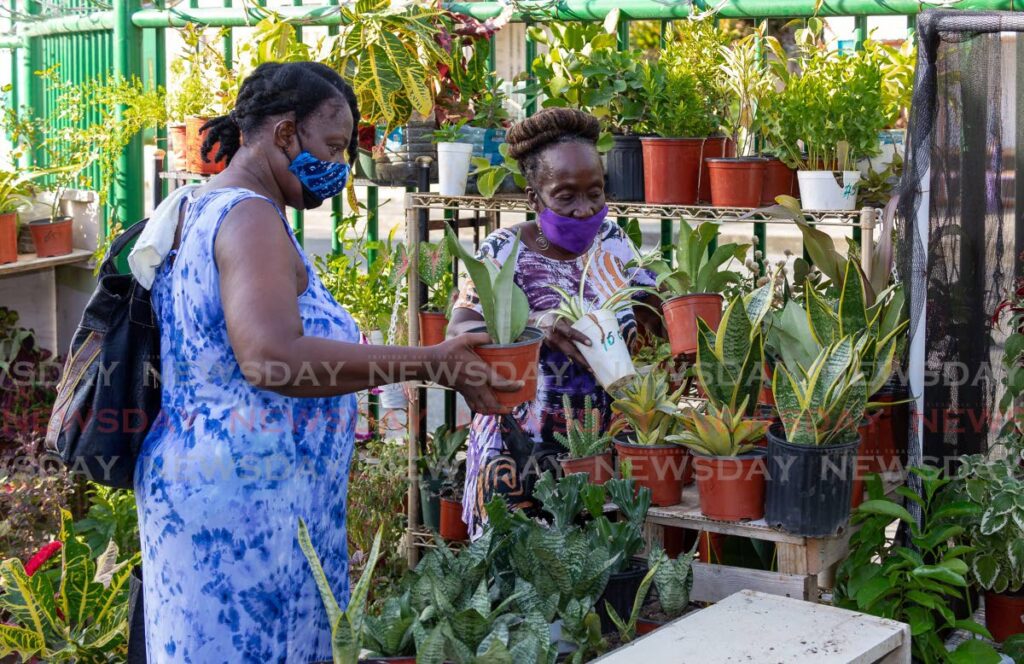Migration and the history of Tobago’s plants

Dr Rita Pemberton
The existing plant population of Tobago are of two types; those naturally occurring and introduced species. The naturally occurring plants include the trees in the rain forest, silk cotton, sea grapes, fat pork, hog plums, balata, calabash, gourds, roucou (annatto) and soosumber.
The introduced species resulted from two waves of migration, that of the First Peoples and since the 17th century European activities influenced plant migration from Africa and Asia.
The first set of introduced plants were brought by the island’s First Peoples population who cultivated cassava, arrowroot, Indian yam, tannia and maize as well as a variety of fruit such as avocadoes, custard apples, caimite, guavas, mammee apples, soursop, sapodilla and other fruits which were brought from South America. These have remained a permanent part of the island’s landscape.
The second wave of plant introductions were stimulated by European colonialism which generated two types of activities: deliberate and accidental plant introductions.

Deliberate plant introductions resulted from the continual European search for exotica, unknown plants that would hopefully generate huge profits on the European market. There was conviction that such plants could be found in the colonies and an important part of European colonial activity was plant hunting. Gardening enthusiasts, some of whom were planters, gave reports on the plants which were found in their colonies and plant hunters undertook expeditions which carefully examined the interior, forested, mountainous and riverine areas, collected species which offered potential and sent samples back to England for identification and testing for market possibilities. These were added to the Kew Gardens Collection. Plant hunters also travelled through Asia and the Pacific and conducted searches, of which there were important plant introductions from these parts of the world.
Of these the breadfruit story is most well-known. Captain Bligh made his famous journey into the Pacific and identified the breadfruit plant as ideal for feeding the growing enslaved population in the Caribbean, at the time when the American War of Independence created a severe food shortage in the region. The Society of Arts offered prizes to planters who successfully cultivated the plant on their estates and in 1801 James Robley was awarded a gold medal for breadfruit cultivation on his estates in Tobago. Other crops which were introduced to Tobago from Asia and the Pacific included bananas, mangoes, ginger, turmeric, pomerac, pommecytheres, a variety of citrus and a range of flora which have become naturalised on the island. The next significant plant movement into Tobago was generated by European trade in Africa.
The focus of the centuries-long European trade between Africa and the Americas was to provide labour for the plantations in the colonies. This trade led to the enforced migration of over 15 million captive Africans who were distributed between the colonies possessed by the various European countries. However, the trade was not confined to the movement of people because the Atlantic crossing, which could last over three months, required that arrangements be made to provide food for the captives during the journey. Along with their human cargoes, the slavers (slave ships) were equipped with sufficient quantities of food items such as beans, pulses and ground provisions which could last the journey. Food supplies were obtained from the gardens which were maintained on the grounds of the forts and from African suppliers. Captive women were used for food preparation – cleaning rice, pounding yams, grinding corn – and as cooks on board the ships.

Food was served to the captives according to the area from which they were obtained: rice for those who came from Senegambia and the Windward coast; corn for those from Gold Coast and yams for those who were obtained from the Bight of Benin and Biafra. A commonly served meal was made up of horse beans (which was usually fed to horses), and peas with fish or salt meat or more commonly “dab-a-dab,” which was a combination of horsebeans, rice and corn, or rice, salt meat and palm oil that was believed to relieve sickness. When the slavers arrived at their destination all left over food items and seeds were discarded, resulting in the migration of several African plants into the plantation colonies. Many of these made their first appearance in the gardens cultivated by the enslaved occupants of the plantations.
Although theirs was an unplanned introduction, the plants which were introduced into Tobago from Africa proved to be highly valuable additions to the island’s food supply, which allowed some enslaved people to earn money during the period of enslavement, the means of survival and ability to supplement their meagre earnings during the post-emancipation years and provided the basis of the island’s food heritage. Of significance is the fact that these introductions also included food and medicinal plants. Black eye peas, benne (sesame) seeds, ochroes, peanuts, pigeon peas, African rice, sorrel, yams, carailli, have become staples in the island’s foodways. The presence of tamarind trees on the island is explained by the use of tamarind seeds to keep water fresh during the Atlantic crossing and the discarded seeds provided the tamarind arboreal presence on the island.
Plants with medicinal properties which were also introduced via the slavers, included “cure alls” such as aloes and leaf of life and several herbs which were considered useful for the voyage. These allowed the enslaved people to have access to home remedies for some of their ailments and generated the practice of cultivation of both food and medicinal plants in their yards and gardens which became a tradition in Tobago.
There were departures in the usage of some of the African plants. For example, while sorrel was used to make a drink in Tobago, its leaves were eaten in Africa. In Tobago, only the fruit of the baobab tree, which is called guinea tamarind, is eaten while in Africa both fruit and leaves are consumed. However, Tobago’s food heritage is firmly based on the food items that made the journey across the Atlantic with the captive Africans in combination with those which were introduced by the island’s First Peoples population.


Comments
"Migration and the history of Tobago’s plants"